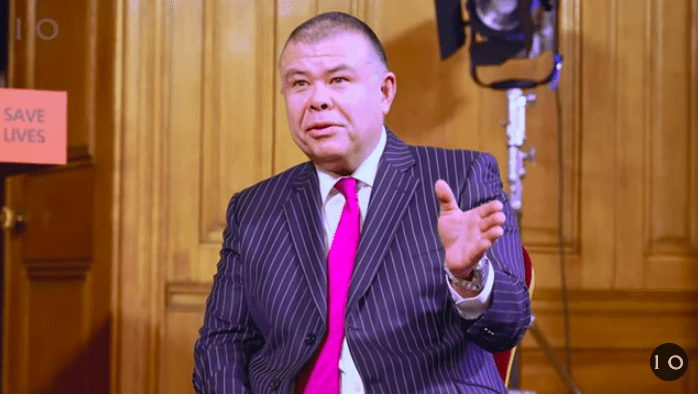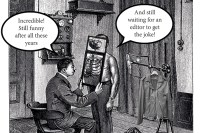Westminster’s much anticipated summer blockbuster dropped last night: ‘A Beacon of Hope: The UK Vaccine Story’ was released on 10 Downing Street’s Twitter and YouTube accounts just after 6pm. The video was teased on Twitter on 10 March, featuring a dramatic score and a tagline ‘coming soon’, raising questions as to how ‘soon’ it would appear, what its contents might be, and whether releasing a victory video in the middle of the UK’s vaccine rollout was slightly premature.
Now we have some of those answers. The roughly 30 minute video features the pandemic’s most recognisable faces – including Boris Johnson, Chris Whitty and Patrick Vallance – as well as far less recognisable figures – from the NHS to the pharmaceuticals industry – who have nonetheless played a huge role in the UK’s vaccine strategy.
The bulk of the video is a timeline of vaccine development, procurement, and rollout: a process that started gaining attention in the autumn of 2020, says Jonathan Van-Tam, but really ‘had been going on since March.’ The chief executives of AstraZeneca and Pfizer – the two vaccines predominantly being used in the UK right now – feature throughout the video, and back up the narrative of the UK as a fast mover: ‘the UK actually started working on vaccines almost immediately’, says AstraZeneca’s boss Pascal Soriot at the start of the video.
It’s not gone unnoticed that the much-anticipated video launched just over an hour after Dominic Cummings published a blog on his personal website
It’s a key theme: emphasis is on early movement, from setting up the vaccine taskforce, to its decisions to invest early and generously in vaccines that, at the time, no one knew would work. It’s a glowing review for all involved. Kate Bingham, chair of the taskforce, is given high praise. She is described by Van-Tam as ‘a venture capitalist, experienced investor, absolutely the right person in the right job’. Credit is also paid to the civil servants and industrial developers who played key roles in decision-making (detailed by Katy Balls in this magazine back in February).
The hurdles faced to create and mass-produce a Covid vaccine are also highlighted throughout the video, as Vallance emphasises that the UK ‘didn’t have a strong domestic manufacturing capability for vaccines’ at the start of the pandemic, which was a crucial for the ‘fill and finish’ step of producing the vaccine.
Whitty connects the many dots that needed to line up to get the vaccines over the line: from ‘getting the science right’, to the UK’s medical regulator having ‘to make sure this was safe and effective as an independent regulation.’ Then the Joint Committee on Vaccination and Immunisation having to ‘decide how to deploy this in a way that was going to have the biggest impact’, and the NHS rolling out the jabs ‘at phenomenal speed.’
While an informative video in some ways (and, towards the end, noble drive to encourage people to get their jabs), it can hardly be described as neutral. While the UK’s vaccine programme is widely thought to be a success story so far (with international data backing that view up), there is something jarring about being told so by only the people whose reputations are at stake. There is no impartial narrator or unbiased voice: every person telling the story is responsible for a huge part of the vaccine delivery. No doubt many of the figures deserve praise, but watching the video end on Van-Tam near tears doesn’t exactly give the viewer the feeling of witnessing objective scrutiny.
The video is also littered with a clear political agenda. The Prime Minister has far less screen time than his scientific and medical advisors, yet his presence hovers throughout the video: from a voice-over calling up Bingham to recruit her for the taskforce role, to imagery of Johnson sending out a tweet marking the UK’s first day of vaccinations, his branding is frequently intertwined in the story. When he does appear, it’s to emphasise domestic manufacturing and self-sufficiency (citing the Covid vaccine plant in Wrexham), tying together the PM’s agenda to combine his Covid strategy with his levelling-up agenda.
Then there’s the matter of the video’s release. The more generous interpretation of the Friday evening drop might be to give viewers some alternative viewing, from their planned weekend of Netflix reruns. But it’s not gone unnoticed that the much-anticipated video launched just over an hour after Dominic Cummings published a blog on his personal website, dropping serious accusations against the government and current aids – rebutting claims made against him linked to lockdown leaks last year.
And there’s another question of timing, one even more pertinent to people still sitting at home and business owners still waiting to reopen: why has a vaccine success video been published by the government, when life is not yet back to normal? Indeed, all the data so far suggests the vaccines are working, with reports this week that only 32 vaccinated people were admitted to hospital with Covid-19 in the last few months. Antibody prevalence is highest in the most elderly age groups thanks to the vaccine, and the infection rate has plummeted faster than most anywhere else in the world.
Yet it is Johnson and his aides that continue to talk down the vaccine miracle, frequently downplaying its role in tackling Covid this time round. Perhaps Friday’s video is the turning point: the government will now struggle, having put out a video that showcases vaccine success headlines from major newspapers and quotes the Prime Minister’s most optimistic assessment, to still play down the vaccine factor in press conferences. For the video to secure any kind of credibility, it needs to deliver on what it promises: as Dr Nikki Kanani puts it, a ‘light at the end of the tunnel’.
As a general rule, success stories should be left for when you’ve reached your end point. That the government has jumped the gun puts all the more pressure on them to declare a return to normal – and soon.







Comments